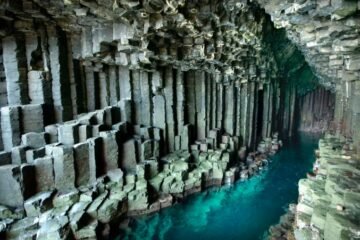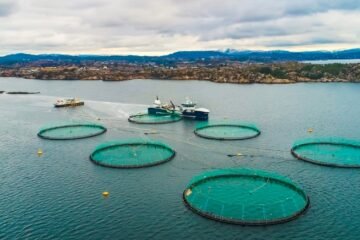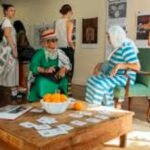DUNDEE, SCOTLAND – A dazzling piece of Persian heritage is taking centre stage at V&A Dundee this spring, as a rare 17th-century tile panel — once part of an Iranian royal palace — goes on public display for the first time in 20 years.
The ornate tilework, stretching over 4.5 metres in width, dates back to the reign of Safavid ruler Shah Abbas II (1642–1666) and originally adorned the private bathhouse of the now-lost Haft Dast Palace in Isfahan, once the imperial capital of Persia.
The panel, described as “stunning” by curators, is a centrepiece in a new exhibition exploring Islamic art, architecture, and luxury. The work has not been seen by the public since it was last exhibited more than two decades ago by National Museums Scotland, who loaned the piece to V&A Dundee for this landmark showcase.
Royal Bathhouse to Museum Masterpiece
Crafted during a period known for its cultural flourishing and architectural grandeur, the tiles were likely installed in the royal hammam — a space reserved for privacy, reflection, and ritual cleanliness.
The Haft Dast (literally “Seven Hands”) Palace, part of the expansive Safavid royal complex in Isfahan, was largely demolished in the 18th century. Many of its decorative elements were either lost or dispersed into private and institutional collections. This panel’s survival and preservation are considered exceptional.
“This is one of the most significant Safavid tile panels outside of Iran,” said a spokesperson from National Museums Scotland. “Its vivid blues, floral motifs, and calligraphic elements reflect the opulence and refined aesthetics of the court of Shah Abbas II.”

V&A Dundee’s Growing Global Profile
The exhibition marks another milestone for V&A Dundee, Scotland’s design museum on the River Tay, which has increasingly drawn international attention for its bold programming and architectural vision.
This latest show is expected to attract scholars, art lovers, and members of Scotland’s Iranian diaspora, offering a rare opportunity to engage with a masterpiece of Persian craftsmanship without travelling to Tehran or Isfahan.
The display is also part of a wider initiative by Scottish museums to elevate lesser-known pieces from their Islamic art collections, many of which have been under-exhibited due to scale, conservation needs, or curatorial focus.
Cultural Diplomacy and Historic Threads
The panel’s reemergence comes at a time when interest in the global history of Islamic art is growing, intersecting with broader questions around cultural diplomacy, preservation, and museum ethics.
While the tilework was acquired legally in the early 20th century, its origins raise questions about heritage dispersion and the legacy of colonial-era collecting. However, curators have emphasised the importance of making such works visible to the public and scholars.
“This isn’t just about beauty — it’s about connecting people with history, empire, and the enduring influence of Islamic design,” said one exhibition curator.
The exhibition will run throughout the summer and includes other artefacts from Safavid, Mughal, and Ottoman collections across Europe, complemented by digital installations and family-friendly educational programming.


















